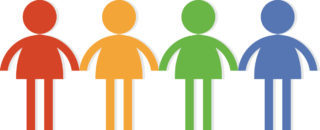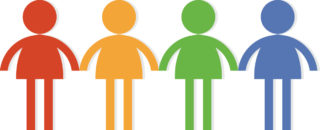Why Impact?
As I wrote in the introduction to my book “International Engagement for Impact in a Changing World”:
“We’ve become complacent about outcomes as things we can measure – how many of this or that? We need to push ourselves forward to look at impact as how are lives being changed in positive ways through our efforts? We need to struggle individually and within our organizations and networks with the concept of impact and what it means to us. Why do we do what we do? It’s in the grappling with concepts that we begin to understand their meanings to our specific situations and nurture a collective commitment to these concepts and goals.
How can our efforts get us closer to the life changing impacts we envision? We need, on a regular basis, to keep making the connections between our visions and the challenges of implementation, and adapt and modify as we learn – through our successes, and equally important, our failures.”
Differences between outcomes and impact
Outcomes measure what you have done (i.e. provided a certain number of services – vaccines, care, trainings) but not necessarily the effect those services have over time – impact (i.e. changes in people’s lives). Impact is much harder to assess so we have often fallen back on what ‘can be counted’ e.g. outputs/outcomes or services provided/numbers served.
“State of the Art”
We’ve come a long way from when an organization I was working with in 2006 among many ‘results measures’ on their dashboard had one that that tried to look at how all of their efforts might actually make a difference in people’s lives by ‘increasing safety’.
Today there is an enhanced awareness and a lot of discussion about the need for measuring impact. A number of organizations are experimenting with the kind of evaluation processes and dashboards for tracking their impact that could work for them. What is needed is more ‘connecting of the dots’ among these somewhat isolated explorations so there is greater shared learning. To help advance this shared learning, below are examples of some of the examples I am aware of.
Questions
Who/what can your organization or collaborative efforts actually impact directly? Perhaps indirectly?
Examples:
- GlobeMed focuses on developing student leaders who then work with and may influence grassroots partner organizations, who then can make an impact within their communities. So GlobeMed is looking at assessing where it can have a direct impact (with students coming through its programs), and what can be measured/assessed about changes in these students. Stories can then be gathered re: impact these changes may have on partner groups and lives in their community. They are also working on a leadership matrix to track student growth in leadership capacities.
- GlobalGiving uses ‘learning and curiosity’ as a proxy for impact. Their theory is if their member organizations become learning organizations, they will increase their effectiveness and impact. They have developed a cycle of Listen → Act → Learn → Repeat to reflect on what is happening through actions their organizations take. Like GlobeMed they see their impact coming through the organizations they impact directly, who then may have more direct impact on their local communities.
What should we be asking to assess if we are having impact? (Not necessarily what we ‘always’ asked, not just what our funders may want us to ask, etc….)
Tracking and /Dashboards
Examples
- The Accountability Lab is doing some interesting work experimenting with tracking impact (See especially pages 23 and 27)
- GlobalGiving is experimenting with helping their participating organizations collect stories and have developed tools to help organizations do this.
- Impact 2030 is working on developing ways evaluate how corporate volunteer programs help to forward the Sustainable Development Goals The first step of their work is to look at other initiatives that may serve as useful resources
Additional Background
“Measuring Impact isn’t for everyone” – ideas on what data should be collected – keep it simple (look at four bullets towards the end of article)
Raising the Bar on Nonprofit Impact Assessment
A Contingency Framework for Measuring Social Performance
Good enough guide to impact-measurement – Focuses on Humanitarian Emergencies – Accountability and Impact but has some good info on impact measurement
The Value of Impact (TED talk video)
Outcome Harvesting (trying to get from activities to outcomes to impact)

